There is often a silver lining in the “bad” things that happen. The Victorian Dressage Festival had scored a real coup in getting Steffen Peters to do a masterclass. But the day before he was due to fly out from California, he was hospitalised with a pulmonary embolus. How lucky for him that this occurred when he was still at home. And for all those attending the masterclass here in Victoria, New Zealand Grand Prix rider and coach Vanessa Way cheerfully stepped in and saved the day.
Her intelligent approach in her masterclass at Werribee Park National Equestrian Centre was very well received. There were lots of exercises with a few consistent messages: give the hand; make them quick off the leg; be honest about the problems; don’t help them too much, but correct the problems in a way that when you take the pressure off they are set up to want to do what you want them to do. Of course, this last theme resonated with me as being quite like Ray Hunt’s advice to make the right thing easy and the wrong thing difficult. One of those universal training principles.
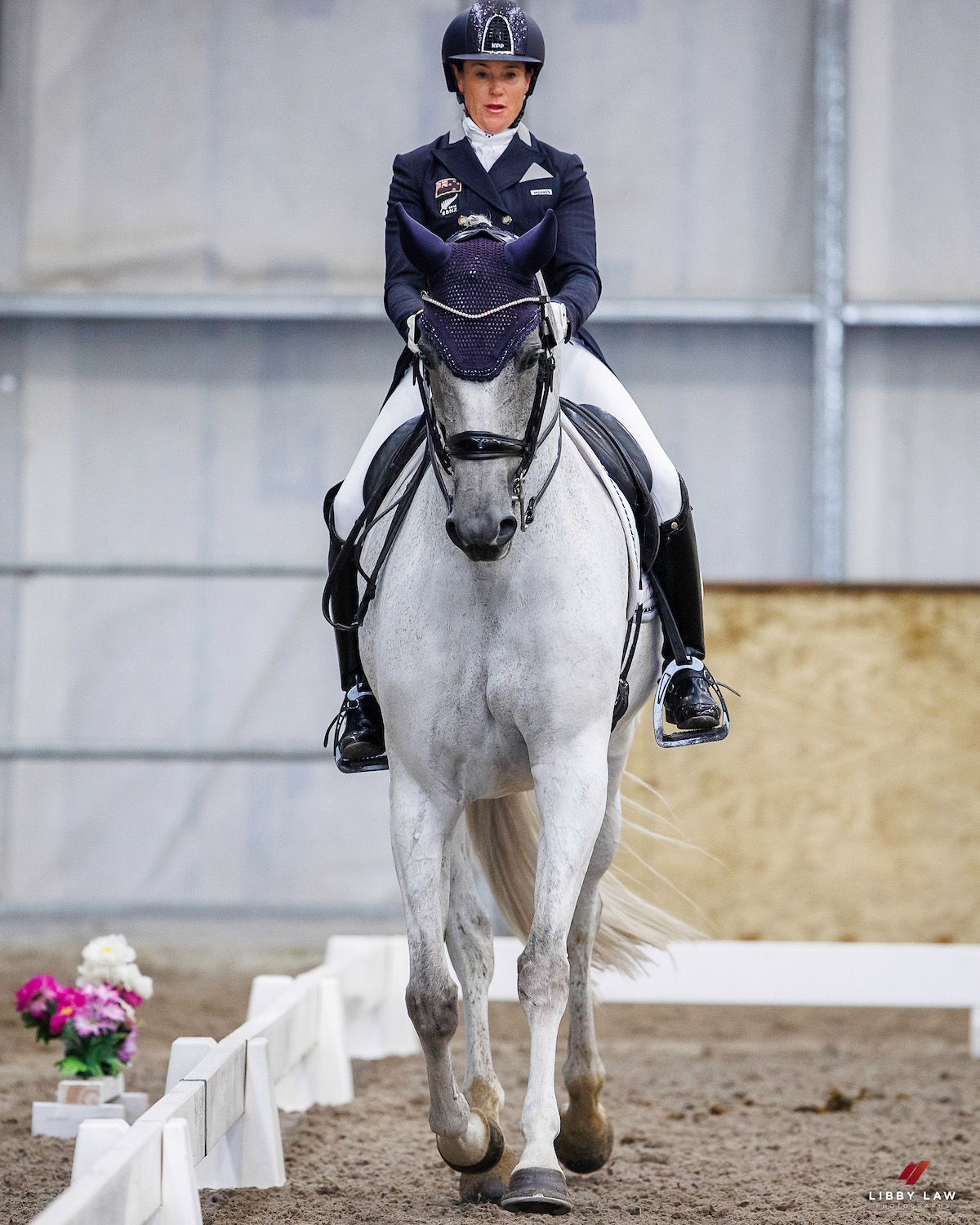
Vanessa grew up as a city kid and one of five children, gleaning rides on local ponies. She was a successful event rider until a serious accident sent her off in a different direction – dressage. Her first Grand Prix was rewarded with a score of 51%, so she sought the best coaching she could afford in her quest to be the best she could be. She has worked with some really great trainers and coaches. Foremost among these is Carl Hester, possibly the most influential contemporary coach. Vanessa has worked with Carl and Charlotte Dujardin for 12 years intermittently. Carl has been a great influence and she adheres to his principles.
Christian Theiss was also an early influence, Vanessa explains. He taught her the need to read the books, to understand the theory. “You wouldn’t fly a plane without reading the manual,” he told her, “so why would you ride a horse without understanding the theory? Go home and read the manual.”
“From that moment I became a nerd for the theory,” says Vanessa. “I love to learn, to learn about everything, about training on the ground, sports psychology, about everything to do with the horse.”
BEGIN WITH THE BASICS
Vanessa explained the basics in her masterclass: “Horses learn from release of pressure. Most riders don’t release the pressure often enough. Take the pressure away, take the aid away, take the exercise away. Don’t drill the exercise on and on.” Regular readers will recognise the importance of negative reinforcement in horse training.
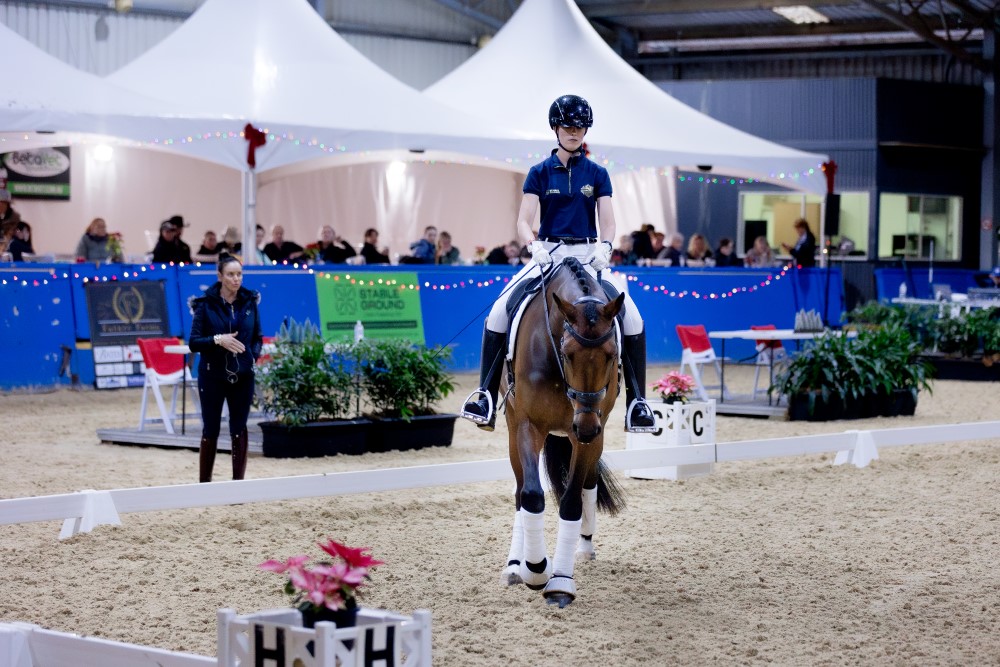
“A mistake is a training opportunity,” she says. In the masterclass she consistently used lateral movements to correct a mistake. The horse was not quick enough off the leg, so this was corrected quickly into a leg-yield. “Generally, the rein he leans on is the leg he is slower off. Every time you get a quick reaction, pat him.” The audience could see that the leg-yield did make the hind leg quicker. A short zig-zag of 4-6 steps, left then right, quickened the hind leg to prepare for a piaffe. A few repetitions and the piaffe was really impressive with improved balance and energy.
“A mistake is a
training opportunity.”
“The leg-yield is more than just an incredible suppling exercise,” she continues. “Apply the pressure in a nice way. To me it is a question/answer. You can apply a pressure to one side, the horse moves away from pressure and then you can release the pressure. I like leg-yield because it’s one side then the other side, but then you are actually working both sides. You can make the horse think and react a lot quicker; you are stimulating the horse in a positive way to give you a positive answer. You can use the anticipation to get the horse to offer the piaffe. When he starts to anticipate going the other way and he jumps on to a diagonal footfall, that’s when you ask for piaffe. The horse offers and you create a reward. The leg-yield helps create a quicker tempo.”
In the masterclass, Vanessa used leg-yield to make the horse quicker, then asked for passage; but when the horse slowed down it was back to leg-yield to restore the quickness. Then leg-yield in passage to keep him quick. Do the same for piaffe. “Create the tension away from the piaffe. Teach them to seek the piaffe (by having less pressure in the piaffe). Think about the shoulders lifting up, feel through the shoulder. Half-pass with the horse’s head still in the middle of the chest. Half-pass a few steps and then leg-yield back.”
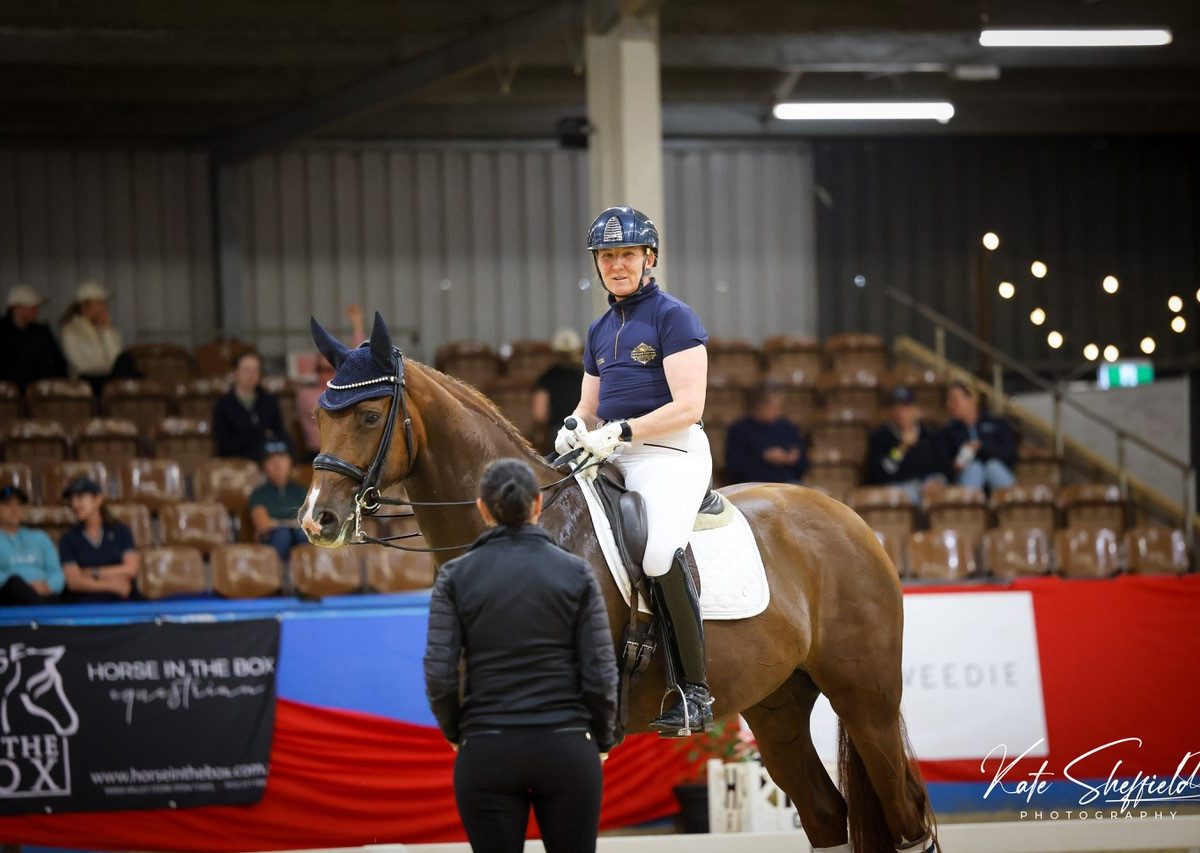
On the same principle of using lateral movements in the training was the use of travers at canter. Travers along the wall at canter, make lots of transitions in the travers. “Sit to the inside in the travers. Not enough bend will make the hind leg stompy. Shorter and quicker in travers, then forwards. Spiral a circle in travers and then forwards. Then come into the pirouette and do nothing. Try not to help him too much. Train it a bit too fast so that when you do nothing it’s just right. Don’t make the pirouette too small until you have bend, suppleness and activity. Canter and counter flex in the working pirouette. Make is adjustable. Be able to put the neck down and up. Forwards and back. Leg-yield in and back three times along the long side.
“If he is tight in the back, get off his back (forward seat). The horse has to allow us into the back. Do renvers to travers on the circle to help him soften the back.
MAKE THE HORSE THINK
“Horses need to be constantly stimulated. Riders don’t stimulate them enough and the horse can become heavy, or leaning. I want the horse to be in tune. I want the horse to be constantly thinking and reacting. More transitions, more half-halts.
“Most half-halts are done badly. It’s easy to become too ‘hand-y’. Some use simple exercises that don’t draw the riders onto their most common fault, which is the hand. Using the sideways movement you take the pressure off, pushing the horse in a better way, to make better balance. It’s such a user-friendly exercise. Rider-friendly because it doesn’t get them using the hand and horse-friendly because it’s one side at a time. Not jamming or blocking the horse but helping them find the better balance.
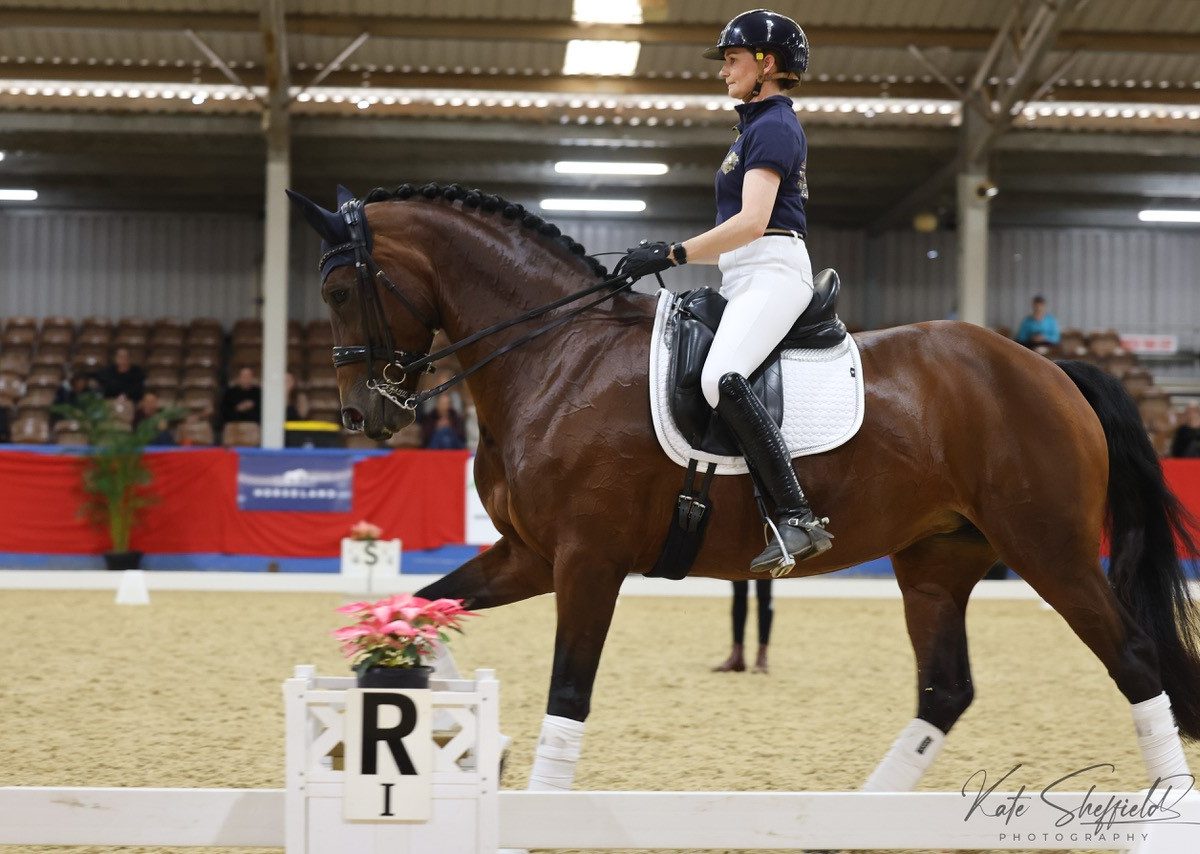
“We use a lot of travers, forward and back with bend. Creating a bend stops the horse from coming on the hand. The aim of dressage is that the aids become seat, leg and last of all, hand; the horse becomes balanced under the seat. The bending keeps riders from thinking about the hand and gives horses somewhere to go. We use the rein originally to stop a horse.
“It is not common to see a very good piaffe because there are so many marks in the transitions in and out, so the transition mark will keep the score up. Create the energy and pressure away from the piaffe and then they will seek to do it.
“Amateurs learn to ride better
if they stay with a snaffle…”
“When you watch Carl ride you can see the hand move, the lightness of the bridle. The snaffle draws the neck up and the curb can lower it. But in Australia and New Zealand we don’t have the same tradition of learning. You can see people using the double bridle to place the head rather than really getting the balance. Amateurs learn to ride better if they stay with a snaffle because they learn to use the seat and legs more correctly.”
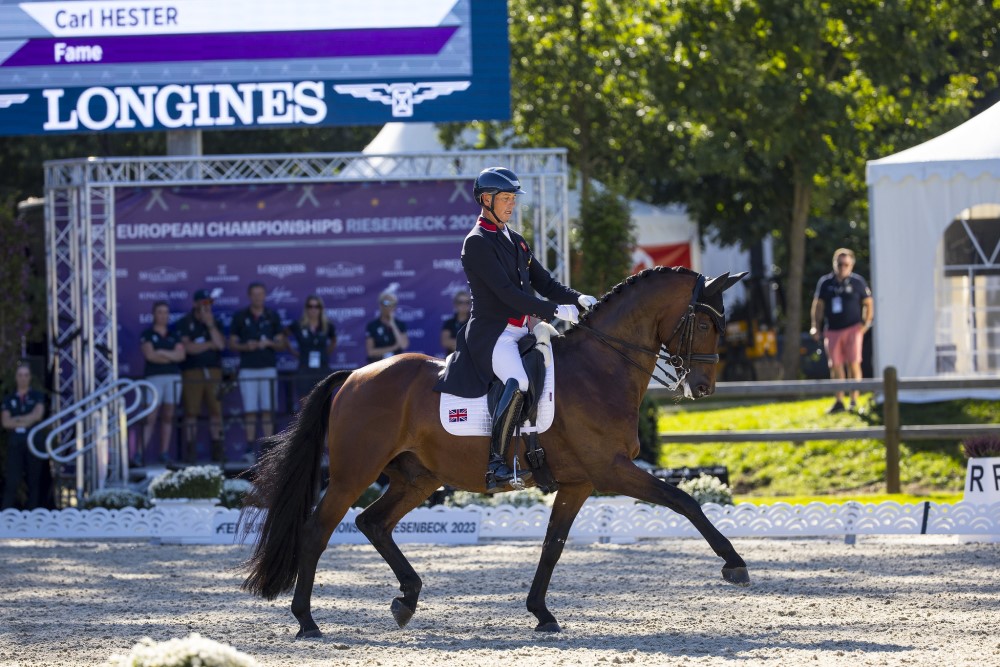
Vanessa also shared some of her philosophy about why we ride. “We have to be accountable,” she says. “We have to be honest in our journey and what is important in life. We will be remembered for how we lived according to our values, not whether we got a 51% or a 75% at Grand Prix. The sport is at a crossroads. You have to focus on the right thing. Winning ribbons badly is worse than not winning them at all.
“The relationship with the horse should be a partnership, like a dance. I love starting the young, gangly three-year-old and making them confident and able to be ridden by anyone. The horses trust me. You might be the leader, but like the leader in a dance, a dance partner. Treat your horse like he is a child with a learning disability. You would not punish a simple child, so do not punish the horse.” She says taking this perspective helps the rider have empathy and compassion for the horse.
READING RECOMMENDATIONS
As it is the holiday season, I asked for Vanessa’s recommendation on books to read. “Janet Jones’ Horse Brain, Human Brain should be compulsory,” she says. “Ride Horses with Awareness and Feel (Academy Bartels). Charles de Kunffy has written several helpful books. Jane Savoie’s It’s Not Just About the Ribbons is an early sports psychology book.” Vanessa also recommended Horses are Made to be Horses, a collection of lectures, notes and classes by Franz Mairinger, a Spanish Riding School instructor who moved to Australia in 1952 and was huge influence in the early days of dressage here.
Vanessa’s recommendation for a New Year’s resolution is to give more with the rein. She suggests to “sit like a princess but have hands like a god”. “Carl said to me, give the hand forwards 1000 times. So the question to ask yourself is, can you give the inside rein forwards in every movement at any time? Give it a go, give them their head.”
Vanessa has given me plenty of food for thought and a few things I am looking forward to trying over the summer. I hope you also have fun with these ideas. Wishing you all a safe and happy summer season. EQ
YOU MIGHT ALSO LIKE TO READ BY KERRY MACK:
Play it Safe From the Ground Up – Equestrian Life, December 2023
The Joy of Raising Foals – Equestrian Life, November 2023
Perfecting the Short Side – Equestrian Life, October 2023
The Subtle Art of Suppleness – Equestrian Life, September 2023
Perfecting The Pirouettes – Equestrian Life, August 2023
Get In The Zone & Go With The Flow – Equestrian Life, July 2023
How to Resolve Common Problems – Equestrian Life, June 2023
A Smarter Way to Compete – Equestrian Life, May 2023
What Motivates Me – Equestrian Life, March 2023
More Than a Walk in the Park – Equestrian Life, February 2023
Scott Keach Makes His Own Luck – Equestrian Life, December 2022
No Room for Bullying in Our Sport – Equestrian Life, November 2022
Avoid the Mud (Play Indoors) – Equestrian Life, October 2022
Why We Love Our Sport – Equestrian Life, September 2022
Getting on the Bit – Equestrian Life, July 2022
Positive Training Really Clicks with Horses – Equestrian Life, June 2022
Learn From Your Mistakes – Equestrian Life, March 2022 issue
Young Horse Classes: A Fun Launching Pad – Equestrian Life, February 2022
Making Sense of all the Bits & Pieces – Equestrian Life, January 2022
The Secret to ‘Soft Hands‘ – Equestrian Life, December 2021
Ask Less, Reward More – Equestrian Life, October 2021
So You Want To Go To The Games? – Equestrian Life, September 2021
The Ins & Outs Of Bitless Bridles – Equestrian Life, July 2021
Taking The Plunge With The Lunge – Equestrian Life, June 2021
Dressage for Showjumpers – Equestrian Life, May 2021
23 Shoulder-In Exercises to Improve Your Horse – Equestrian Life, April 2021
Understanding Your Horse’s Inner Thoughts – Equestrian Life, March 2021
Make the Most of Your Seniority – Equestrian Life, February 2021
Building Better Relationships – Equestrian Life, January 2021
Whipping Up Controversy – Equestrian Life, December 2020
The Importance of a Trusting Relationship – Equestrian Life, November 2020
Welcome to Kindergarten for Foals – Equestrian Life, October 2020
The Carrot or the Liquorice? Positive Reinforcement – Equestrian Life, September 2020
Submission or Stress? Something to Chew On – Equestrian Life, August 2020
A Relaxed Horse is a Happy Horse – Equestrian Life, July 2020
The Literate Horse Rider – Equestrian Life, June 2020
Why Horses Love Ingrid Klimke – Equestrian Life, May 2020

